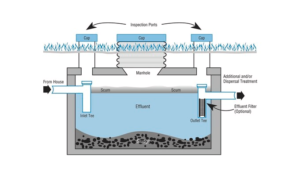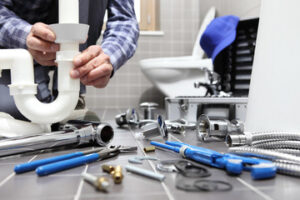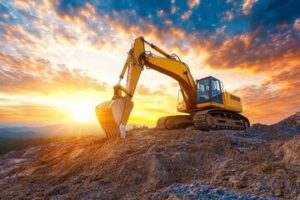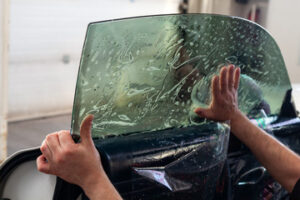Insulation Perth slows the transfer of heat which reduces energy costs and helps protect structures from moisture damage. It’s an important part of any home or commercial building to prevent costly damage from air, water and sound leaks.
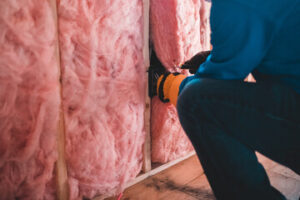
Insulation comes in multiple forms including fiberglass, foam and cellulose. Foam insulation is the most effective because it can expand to seal the area.
Insulation helps to reduce energy costs by limiting the amount of electricity and heating needed for homes. It provides a significant return on investment through lower energy bills, and may even qualify homeowners for state and federal tax credits.
Energy costs are rising at a much faster rate than incomes, and re-insulating your home is an affordable way to help keep them in check. In fact, many homeowners see a return on investment in less than three years.
The thermal insulation in your walls, attic, and crawl space is a barrier that restricts the flow of heat to and from the building, keeping the indoor temperature more comfortable. This limits the use of fossil fuels to provide heating and cooling, decreasing greenhouse gas emissions.
It is estimated that about half of the energy used in buildings is for heating and cooling, so good insulation has a direct impact on your energy bill. It can reduce the amount of energy needed to maintain a comfortable indoor temperature, and also decreases the use of power plants that generate electricity using fossil fuels.
If you have a high utility bill, a professional energy audit can determine if your insulation is to blame. This type of inspection involves depressurizing your house and using specialized tools to locate air leaks that reduce efficiency. It also uses infrared scanning to detect the differences in temperatures on surfaces, indicating the presence of uninsulated areas and other issues.
Some common signs that your insulation is in need of replacement include drafts, cold spots in certain rooms, and inconsistent temperatures from room to room. In addition, if you notice condensation in the attic or on window frames, it could be a sign of poor insulation. Inspecting insulation for damage or moisture regularly is important, and replacing it immediately will improve the performance of your home or commercial property.
In addition to reducing the need for costly heating and cooling, properly installed insulation increases a building’s value and appeal to potential buyers. This is particularly true in the current housing market, where many potential buyers prioritize energy-efficient features.
Increases Comfort
Insulation helps reduce heating and cooling costs by reducing the airflow between your home’s interior and the outdoors. It can also prevent moisture penetration, which can cause damage to building materials and promote the growth of mould and mildew. In addition, it can help reduce stale indoor air and noise, as well as provide a comfortable living environment.
The right type and amount of insulation can make your home more comfortable, especially in winter. This is because it prevents heat from escaping your home in the form of radiation, which keeps your indoor temperature more stable, reducing energy consumption and saving you money on energy bills. Insulation also helps to keep your home cool in summer, as it prevents heat from leaking into your indoor space, reducing the need for excessive cooling.
The best types of insulation for your home depend on the climate you live in and the existing structure of your building. For example, a brick veneer home typically requires bulk insulation to fill the cavity wall, while a weatherboard home may be suitable for foam or reflective insulation. It’s also important to choose a contractor with experience in your local area to ensure the right product and installation.
A properly insulated home can dramatically reduce energy bills, as well as contribute to a greener lifestyle by reducing greenhouse gas emissions and protecting the planet. It can also increase the value of your property and enhance its aesthetic appeal, making it an excellent investment for new homeowners or those looking to update their current house.
The right amount of insulation can reduce energy bills by up to 50%, depending on the type and how it is installed. However, it’s critical that it is correctly installed to maximise its benefits and prevent draughts and gaps that can increase your energy costs. For instance, if the insulation is compressed or gaps are present between the framing and cladding, it will lose its R-value and reduce its effectiveness. It’s also important to check that the insulation is not touching a metal surface or electrical wiring, as this can affect its performance.
Reduces Moisture Damage
Insulation helps reduce condensation, which can cause water damage to buildings and lead to mold and mildew growth. Insufficient or improper insulation can result in higher energy bills and damage to building materials. Insulation is especially important for areas where moisture is likely to occur, such as attics or basements. Insulation is also helpful in preventing moisture damage to wall cavities. Moisture in wall cavities can result from air leaks, condensation, or if the insulation is wet. If the insulation is wet, it must be replaced immediately to prevent mold or mildew growth.
Increasing your home’s insulation will not only lower your energy bills, it will increase the comfort of living in your home and add value to your property. It will also help to protect your possessions, as well as the health of your family.
In addition to keeping you warmer and reducing your energy costs, insulation also helps to reduce noise from outside and between floors. This can be very beneficial for people with sensitive hearing or who want to enjoy a peaceful environment.
As insulation ages, it can start to lose its effectiveness and may not be able to properly block out exterior sounds. Additionally, older insulation can hold onto dust and allergens, which can affect the respiratory health of household members. If you are experiencing high energy bills, a lack of temperature control, or other signs of old insulation, replacing it will benefit your health and the overall condition of your home.
If you are looking for a more environmentally friendly option than fiberglass batting, then cellulose insulation is the way to go. It is made from recycled paper products and can be easily installed in wall cavities without damaging finished walls. It’s also fire-resistant, insecticidal and antiseptic, making it a good choice for homeowners who have allergies.
Cellulose is treated with boric acid, which gives it superior flame resistance and acts as a mildew inhibitor. It’s also more durable than blown-in options, making it an excellent choice for a long-term solution to lowering your energy bills and protecting your home from moisture damage.
Saves Money
Adding or upgrading insulation is one of the best home improvement projects you can undertake. It offers a high return on investment and can save you money both in the short and long term. Energy savings can cover the initial cost of the installation in just a few years.
Insulation prevents the loss of heat in winter and the gain of heat in summer, which reduces your energy bills. The amount of energy saved will depend on the type and age of your heating and cooling systems, the size of your house, the climate in which you live, and how well your existing insulation is in place. A newer home, for example, will require less insulation than an older, leaky house in the same climate.
Properly installed insulation can significantly reduce your electricity and gas consumption, and thus the environmental impact of your home. It also ensures that you only use the energy needed to heat or cool your living areas, and that no energy is wasted in heating or cooling attics or unoccupied rooms.
Effective insulation is rated by a system called R-Value, which measures how resistant it is to the flow of heat through it. The higher the R-value, the better the insulation. It is therefore important to choose the right insulation for your needs.
The R-value of a material is determined by measuring the temperature difference between two surfaces in an enclosed space. A lower temperature difference will result in a higher R-Value.
In addition to reducing energy bills, the R-Value of a material determines how much heat it keeps for longer. This is important because it affects how often your heating and cooling system runs, and thus how much energy it uses.
Another benefit of insulation is that it reduces outside noises and helps you to sleep more peacefully at night. This can help improve your health and increase productivity at work or at home. Insulation can also prevent condensation that can damage buildings and equipment. This can lead to corrosion and costly repair or replacement. This is because insulation creates barriers between adjacent bodies, preventing the transfer of heat, electricity, moisture or sound.
